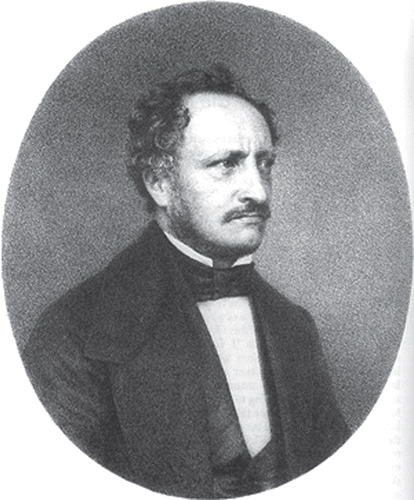Strabismology is an old craft and a translation of yet another first but unknown description is published in this issue of Strabismus. Ocular counterrolling was first described by John Hunter in 1786 (published in Strabismus 2002;10:279–281), poulies were first described by Jacques René Tenon in 1805 (published in Strabismus 2003;11:63–68) and, published in this issue of Strabismus, the relation between accommodation and vergence, and accommodative esotropia were first described by Johannes Peter Müller in 1826. Johannes Peter Müller was the founder of German physiology and teacher of Hermann von Helmholtz, Emil du Bois-Reymond, Theodor Schwann, Friedrich Gustav Jakob Henle, Karl Ludwig, Rudolf Virchow, Ernst Brücke, Ernst Haeckel, and Robert Remak, among others. He founded the journal Archiv für Anatomie, Physiologie und wissenschaftliche Medicin in 1834. His two-volume “Handbuch der Physiologie,” published in 1837 and 1840, was the leading textbook of physiology in the 19th century. It reflected the first combined application of human and comparative anatomy, chemistry, and other physical sciences to solve questions in physiology.
Johannes Peter Müller () was born on July 14, 1801, as the son of a shoemaker in Koblenz. Koblenz is on the left bank of the Rhine, where the Moselle merges into the Rhine. The left bank was under French occupation until the Congress of Vienna in 1815, when Rhineland became part of Prussia. He studied medicine at the University of Bonn, founded in 1818 by the Prussian king Friedrich Wilhelm III. His doctoral thesis in 1822 described animal movements in insects. He then studied with the anatomist Carl Asmund Rudolphi in Berlin and became an adept microscopist. After he passed the Prussian state medical exam he returned to Bonn in 1824 with a microscope of Rudolphi. He published his “Zur vergleichenden Physiologie des Gesichtssinnes des Menschen und der Thiere nebst einem Versuch über die Bewegung der Augen und über den menschlichen Blick” (“On the comparative physiology of the visual sense of man and animals, and a study on the movements of the eyes and on human gaze”) in 1826 ().
The book is difficult to read for most people because it is printed in Fraktur, old German letters. After some exercise it gets easier, however, and then the true genius of Müller, 25 years old when he wrote it, unfolds. This book treats the visual sense comprehensively. Chapter IV is about the horopter and double vision, chapter V about accommodative vergence and various forms of strabismus, chapter VI about eye and gaze movements; but chapter VII is about the eyes and vision in insects, spiders, and lobsters! He liked to compare the ways that different animals solve physiological problems.
Parts 1 and 2 from Chapter V, in this issue of Strabismus, describe the relation between accommodation, vergence, and pupillary constriction. Admittedly, Donders and Haas described this in much more detail, but that was 35 years later. Müller believed that the lens only moved forward during accommodation; the deformation of the lens was only discovered by Anthonie Cramer in 1851 (Donders, 1851). In the next issue of Strabismus we will publish Part 3 from Chapter V: “About the various kinds of strabismus,” where Müller discusses strabismus concomitans, strabismus ciliaris, strabismus amblyopicus, strabismus oculomotorius, strabismus assuetus, strabismus myopum, strabismus lusciosus, strabismus duplex, and strabismus incongruous. Why then do most of us think strabismology started with Albrecht von Graefe, Franciscus Cornelis Donders, and Hermann von Helmholtz? Müller laid the basis for all of them. He had no Medline, no journals, just a few books by Aquilonius, Kepler, and Purkinje.
REFERENCES
- Donders FC. Cramers ontdekking van den grond des accommodatievermogens van het oog. Nederlandsch Lancet. 1851–1852:529–532.
- Hunter J. Observations on Certain Parts of the Animal Oeconomy (London, 1786). First description of ocular counterrolling. Strabismus. 2002;10:279–281.
- Tenon JR, Naus J, Blanken R. Anatomical observations on some parts of the eye and eyelids (1805). Strabismus. 2003;11:63–68.

